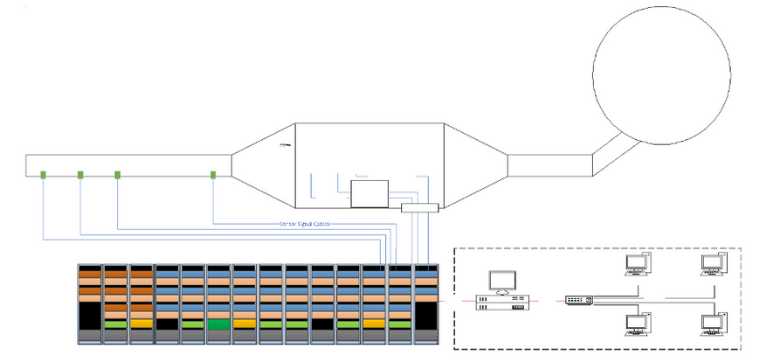Wind Tunnel Test Solution for High-Speed Data Acquisition
Project: Wind Tunnel Test Solution for High-Speed Data Acquisition
To achieve high-speed synchronous measurement of output signals from pressure sensors, heat flux sensors, and other transducers in wind tunnel experiments. The system is equipped with a high-precision, high-speed, wide-bandwidth data acquisition (DAQ) system, meeting stringent requirements for accuracy, performance, real-time processing, synchronization, and strong anti-interference capability in wind tunnel testing and related research.
System Configuration
The data acquisition system consists of:
1. Signal Conditioning System
Used for preprocessing signals from:
Piezoelectric sensors (charge output)
Thin-film resistance sensors & thermocouples (heat flux measurement)
Piezoresistive sensors
IEPE/ICP sensors
Provides amplification, filtering, and excitation power for corresponding sensors.
2. Isolated DAQ Systems
32 × DE-918 Isolated Dynamic Signal Test and Analysis
Systems (16ch/system, 512 ch total)
For conventional signal acquisition, storage, analysis, and processing
8 × DE-916 High-Performance Isolated Dynamic Signal Test and Analysis
Systems (16 ch/system, 128 ch total)
For high-speed signal acquisition, storage, analysis, and processing
3. Synchronization System
Ensures precise synchronous sampling across all channels.
4. Control Computer & Data Cabling
Manages system operation and connects sensors, signal conditioners, DAQ units, and speed-triggering systems.
Key Technical Requirements
1. Fully Independent Per-Channel Processing
Each channel must have dedicated signal conditioning, amplification, filtering, A/D conversion, and DSP processing to ensure:
Zero phase delay in synchronous sampling
No crosstalk between channels
2. High-Speed & High-Accuracy Sampling
Supports ultra-high sampling rates (exact specs depend on sensor requirements)
Maintains high signal integrity even in high EMI environments
3. Strong Anti-Interference Design
Shielded cabling & grounding optimization
Isolated signal paths to prevent ground loops and noise coupling
4. Real-Time Data Processing & Storage
Capable of continuous high-speed recording without data loss
Supports triggered acquisition (e.g., synchronized with wind tunnel speed control)
System Advantages
✔ Modular & Scalable – Can be expanded for larger channel counts (e.g., 1000+ channels)
✔ Low-Latency Synchronization – Ideal for transient phenomena (e.g., shock waves, turbulence studies)
✔ Multi-Sensor Compatibility – Works with piezoelectric, IEPE, thermocouple, and strain sensors
✔ Industrial-Grade Reliability – Suitable for long-duration wind tunnel campaigns
Typical Applications
Aerodynamic pressure distribution testing
Boundary layer heat transfer studies
Hypersonic flow measurements
Aeroelasticity & structural dynamics experiments
This system meets military/aerospace-grade testing standards (e.g., AIAA, ISO 17025). Let us know if you need further customization details!

